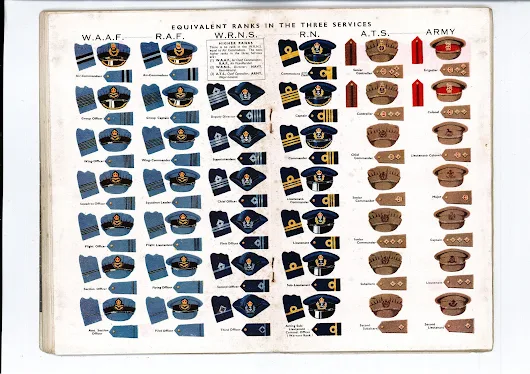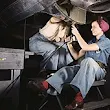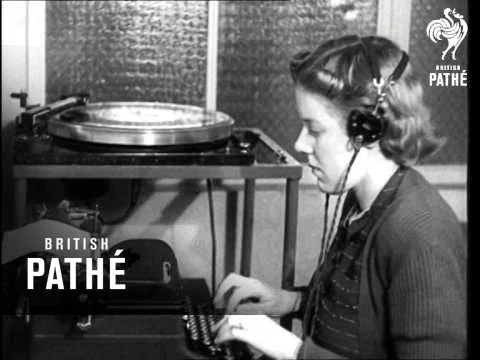https://en.wikipedia.org/wiki/National_Fire_Service
Fire Services — NFS, AFS, LFB
https://www.youtube.com/playlist?list=PLtakTnKQQMCwPk-w2ej-S_SYisWNtRZxK
ARP > Civil Defence Service
https://en.wikipedia.org/wiki/Civil_Defence_Service
https://wwdeux.blogspot.com/2019/03/arp-air-raid-precautions.html
ATA > Attagirls
https://en.wikipedia.org/wiki/Air_Transport_Auxiliary
Attagirls
ATS - Auxiliary Territorial Service
https://en.wikipedia.org/wiki/Auxiliary_Territorial_Service
ATS - Ack Ack
https://wwdeux.blogspot.com/2019/01/ats.html
BEF > British Army
https://en.wikipedia.org/wiki/British_Expeditionary_Force_(World_War_II)
https://en.wikipedia.org/wiki/British_Army#World_Wars_(1914%E2%80%931945)
SAS
https://en.wikipedia.org/wiki/Special_Air_Service
JWO - Joint War Organisation
https://en.wikipedia.org/wiki/Joint_War_Organisation
LDV, Home Guard
44-12-3 Home Guard Stands Down ..
LDV - Local Defence Volunteers > Home Guard
https://en.wikipedia.org/wiki/Home_Guard_(United_Kingdom)
Home Guard - recruiting, training, kit
https://wwdeux.blogspot.com/2019/01/ldv.html
Auxiliary Units or GHQ Auxiliary Units
https://wwdeux.blogspot.com/2018/07/auxiliaries.html
https://en.wikipedia.org/wiki/Auxiliary_Units
https://www.forces-war-records.co.uk/blog/2015/09/02/secret-army-the-auxiliary-units-britains-final-line-of-ww2-defence-in-case-of-invasion
BSS - British Security Service - MI5
https://en.wikipedia.org/wiki/MI5
https://en.wikipedia.org/wiki/British_intelligence_agencies
CCS - Combined Chiefs of Staff ..
LAAS (London Auxiliary Ambulance Service)
http://www.bbc.co.uk/history/topics/civil_defence_ww2
https://www.iwm.org.uk/memorials/item/memorial/44072
NAAFI - Navy, Army and Air Force Institutes
LAAS (London Auxiliary Ambulance Service)
http://www.bbc.co.uk/history/topics/civil_defence_ww2
https://www.iwm.org.uk/memorials/item/memorial/44072
NAAFI - Navy, Army and Air Force Institutes
NAAFI: New Memorial Honours Fallen In 100 Years Of Service - Forces > .
https://en.wikipedia.org/wiki/Navy,_Army_and_Air_Force_Institutes
Nursing
https://www.findmypast.co.uk/articles/world-records/full-list-of-united-kingdom-records/armed-forces-and-conflict/military-nurses-1856-1994
Nursing training
https://wwdeux.blogspot.com/2019/01/medical-services.html
Observer Corps > Royal Observer Corps
https://en.wikipedia.org/wiki/Royal_Observer_Corps
Nursing
https://www.findmypast.co.uk/articles/world-records/full-list-of-united-kingdom-records/armed-forces-and-conflict/military-nurses-1856-1994
Nursing training
https://wwdeux.blogspot.com/2019/01/medical-services.html
Observer Corps > Royal Observer Corps
https://en.wikipedia.org/wiki/Royal_Observer_Corps
Manpower
Demographics & Militaries ..
Demographics & Militaries ..
Military Costs
Budgets (Military) ..
Budgets (Military) ..
Reservists
1939 jajn ..Royal Air Force
https://en.wikipedia.org/wiki/Royal_Air_Force
Royal Navy
https://en.wikipedia.org/wiki/Royal_Navy
Royal Marines
https://en.wikipedia.org/wiki/Royal_Marines
Commandos
https://en.wikipedia.org/wiki/British_Commandos
SOE - Special Operations Executive
40-7-20 SOE ..
SOE training ..
https://en.wikipedia.org/wiki/Special_Operations_Executive
Female Agents of SOE - tb >> .
https://www.youtube.com/playlist?list=PLtakTnKQQMCyPmr5A_jKGgIKaAq56so2D
Female Agents of SOE - tb >> .
https://www.youtube.com/playlist?list=PLtakTnKQQMCyPmr5A_jKGgIKaAq56so2D
Special Operations
SBS - Special Boat Section > Special Boat Service
https://en.wikipedia.org/wiki/Special_Boat_Service
https://en.wikipedia.org/wiki/Special_Boat_Service#Second_World_War
SIS - Secret Intelligence Service > MI6 & MI5
https://wwdeux.blogspot.com/2019/02/mi6.html
https://en.wikipedia.org/wiki/Secret_Intelligence_Service
https://en.wikipedia.org/wiki/Intelligence_Corps_(United_Kingdom)
Male - Armed Forces, Conscription, Volunteer Services
Army - BEF
ARP
https://wwdeux.blogspot.com/2019/03/arp-air-raid-precautions.html .
Auxiliaries - LDV - Army
Commandos
Royal Marine Commandos - Navy
Conscription
NFS & fire services
River police
Royal Marine Commandos - Navy
Women
SBS - Special Boat Section > Special Boat Service
https://en.wikipedia.org/wiki/Special_Boat_Service
https://en.wikipedia.org/wiki/Special_Boat_Service#Second_World_War
SIS - Secret Intelligence Service > MI6 & MI5
https://wwdeux.blogspot.com/2019/02/mi6.html
https://en.wikipedia.org/wiki/Secret_Intelligence_Service
https://en.wikipedia.org/wiki/Intelligence_Corps_(United_Kingdom)
Male - Armed Forces, Conscription, Volunteer Services
Army - BEF
ARP
https://wwdeux.blogspot.com/2019/03/arp-air-raid-precautions.html .
Auxiliaries - LDV - Army
Commandos
Royal Marine Commandos - Navy
Conscription
NFS & fire services
River police
Royal Marine Commandos - Navy
Women
https://glamourdaze.com/women-in-uniform-in-world-war-two
WAAF - Women's Auxiliary Air Force
https://en.wikipedia.org/wiki/Women%27s_Auxiliary_Air_Force
WAAF
WI - Women’s Institute
https://en.wikipedia.org/wiki/Women%27s_Institutes
WLA - Women’s Land Army > Land Girls
https://en.wikipedia.org/wiki/Women%27s_Land_Army
WTC - Women’s Timber Corps > Lumber Jills
https://en.wikipedia.org/wiki/Women%27s_Timber_Corps
WRNS - Women's Royal Naval Service > Wrens
https://en.wikipedia.org/wiki/Women%27s_Royal_Naval_Service .
Linguists & Y Stations ..
WVS - Women's Voluntary Services
https://en.wikipedia.org/wiki/Royal_Voluntary_Service
https://www.royalvoluntaryservice.org.uk/about-us/our-history
Women's Volunteer Groups - BBC
http://www.bbc.co.uk/history/ww2peopleswar/categories/c54954/
Women Under Fire in World War Two
http://www.bbc.co.uk/history/british/britain_wwtwo/women_at_war_01.shtml .
Conscription
https://en.wikipedia.org/wiki/Conscription_in_the_United_Kingdom#Second_World_War
39-40 Conscription
On 29 March 1939, the Secretary of State for War announced that the Territorial Army was to be increased in establishment from 130,000 to 170,000, and then doubled in numbers. Each of the existing first line Territorial Army units and formations were required to form duplicate (or second line) units and formations. Although the personnel came forward, equipment for them was scarce.
Conscription was introduced on 27 April 1939 for the first time in British peacetime history. The Military Training Act required all males to serve in the Armed Forces for six months on reaching their twentieth birthday. On completion of six months service, the conscripts were required to serve in the Territorial Army or Special Reserve. This measure had only just been instituted by the outbreak of war, with only one intake of 35,000 men called up on 15 July.
Germany invaded Poland on 1 September 1939, and in consequence, in accordance with Polish-British Common Defence Pact, the United Kingdom declared war on Germany with effect from 3 September 1939. The British Army had started mobilizing on 1 September, but was woefully ill-equipped and ill-prepared for war. Much of the strategy, tactics and equipment dated from the Great War. The first elements of the British Expeditionary Force left for France on 3 September 1939, just over twenty-five years since its predecessor had crossed the English Channel bound for war.
Prior:
At the dawn of 1939, the likelihood of another European war was growing ever greater. Germany had invaded, and then annexed, Austria in March 1938. In October that year, contrary to the Munich agreement, German troops occupied the Sudetenland which was part of Czechoslovakia.
In March 1939, Germany occupied the whole of Czechoslovakia, and war seemed inevitable. H.M. Government began to change its policy of appeasement, and full-scale rearmament of the British Armed Forces commenced (although it can be argued that some form of re-armament commenced in the mid-1930's, contrary to popular belief). Plans were drawn up for the British Army to send an expeditionary force of two corps (each comprising two infantry divisions) to France at the outbreak of war. This was in anticipation of defending France in a similar manner to the circumstances of the Great War.
http://www.britishmilitaryhistory.co.uk/documents.php?nid=2 .
Commonwealth
Australia
AAMWS - AWAS - AWLA - WAAAF - WRANS ..ANZACs ..
Australian Women -- WW2 ..
Canada
CWAC
Morale
.. Army - BEF . ATA . ATS . Auxiliaries .. British Resistance .. Coastal Command .. Commandos .. Fire Services - NFS, AFS, LFB .. Home Guard .. Land Girls .. LDV . Lumberjills .. Medical Services .. Paratroopers .. RAF .. Rescue .. RNS .. Royal Marines .. Royal Navy .. SAS .. ●● Volunteers .. WAAF .. Wehrmacht .. WLA .. WRENS .. WTC ..
●● Weaponry .. Bombs .. Guns .. Hand Weapons .. Hobart's Funnies .. Manufacturing .. Mines .. Tanks ..
●● Theatres .. Africa, Mediterranean .. Atlantic .. European theatre .. Pacific theatre ..
Agriculture | Air | Atrocities | Blitz | Campaigns | Characters | Cold War | Defence | Espionage| Government | Home Front | Industry | Infrastructure | Intelligence | Land | Locations | Logistics| Propaganda, Publications | Sea | Services | Society | Tactics | Technology | Timelines | Theatres | Volunteers | War | Weaponry | WW1 |
●● Weaponry .. Bombs .. Guns .. Hand Weapons .. Hobart's Funnies .. Manufacturing .. Mines .. Tanks ..
●● Theatres .. Africa, Mediterranean .. Atlantic .. European theatre .. Pacific theatre ..
Agriculture | Air | Atrocities | Blitz | Campaigns | Characters | Cold War | Defence | Espionage| Government | Home Front | Industry | Infrastructure | Intelligence | Land | Locations | Logistics| Propaganda, Publications | Sea | Services | Society | Tactics | Technology | Timelines | Theatres | Volunteers | War | Weaponry | WW1 |








